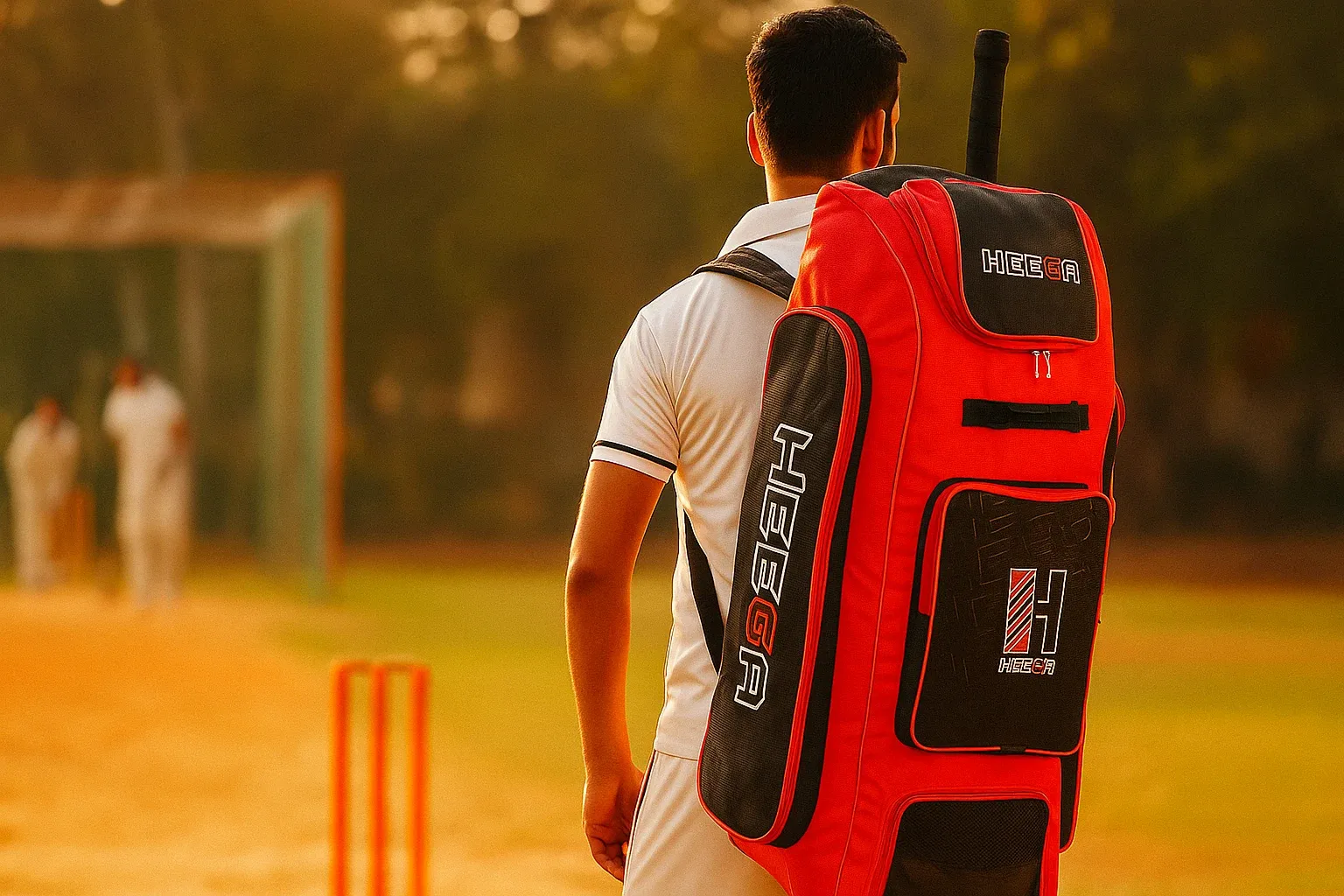
A cricket kit bag is more than just a piece of luggage – it’s the home of a cricketer’s entire world. From bats and balls to protective gear and personal items, the kit bag carries everything that keeps a player game-ready. For professionals, it’s an essential companion; for beginners, it’s a tool that instills discipline and organization.
But with so many choices available today, how do you know which cricket kit bag is the right one? The answer lies in understanding the anatomy of a perfect kit bag. In this blog, we’ll break down the features, styles, and must-have elements to consider before buying one.
1. Why a Good Kit Bag Matters
- Organization: Keeps your gear in order so you don’t waste time searching.
- Protection: Ensures your bat, pads, and gloves are safe from damage.
- Convenience: Easy to carry around for training, travel, or matches.
- Durability: A strong bag can last years, saving you from constant replacements.
A kit bag doesn’t just carry equipment – it reflects your professionalism and preparedness.
2. Types of Cricket Kit Bags
2.1 Duffel Bags
- Carried on the shoulders like a backpack.
- Lightweight, compact, and popular among young cricketers.
- Best for players who don’t carry too much gear.
2.2 Wheelie Bags
- Equipped with wheels and handles for easy rolling.
- Spacious and sturdy, perfect for professionals.
- Saves energy, especially when traveling with heavy gear.
2.3 Hybrid Bags
- Combine features of both duffel and wheelie bags.
- Offer flexibility – carry on shoulders or roll on wheels.
3. The Essential Compartments in a Perfect Kit Bag
3.1 Bat Section
Your bat is the most prized possession, and the kit bag must protect it. Look for:
- Padded bat sleeves to prevent cracks and dents.
- Separate compartments for multiple bats if you carry spares.
3.2 Protective Gear Section
Pads, thigh guards, and gloves should have dedicated spaces. A perfect kit bag includes:
- Spacious compartments for leg guards.
- Ventilated pockets for gloves to avoid odor.
3.3 Helmet Compartment
Helmets are bulky, so specialized compartments help avoid damage and make packing easier.
3.4 Clothing & Footwear Section
A professional bag always has:
- Separate shoe compartment with ventilation.
- Clean clothing section to avoid mixing with sweaty gear.
3.5 Utility Pockets
- For accessories like sunglasses, wristbands, and caps.
- Some bags even have insulated bottle holders for hydration.
4. Material & Build Quality
The strength of a cricket kit bag depends on:
- Fabric: Polyester and nylon are durable and lightweight.
- Zippers: Heavy-duty zips ensure smooth operation.
- Stitching: Reinforced stitching prevents tears under load.
- Base Support: Rubberized or padded base keeps the bag stable and long-lasting.
5. Comfort and Portability
Carrying a bag full of cricket gear isn’t easy. Look for:
- Padded shoulder straps (for duffel style).
- Ergonomic handles (for wheelie bags).
- Smooth wheels (for rolling bags).
A well-designed bag reduces strain and keeps you comfortable on the go.
6. Size Matters: Choosing the Right Capacity
- Small Bags (50–70 liters): Best for junior players.
- Medium Bags (80–100 liters): Suitable for club cricketers.
- Large Bags (100+ liters): Ideal for professionals with complete gear sets.
Always choose based on your playing level and how much gear you usually carry.
7. Modern Innovations in Kit Bags
Cricket equipment companies, including Heega Sports, are innovating with new features:
- Waterproof fabrics for protection against rain.
- USB charging ports for modern players on the move.
- Anti-theft zippers for security.
- Stylish designs that make the bag stand out.
These innovations make kit bags more than just storage solutions – they’re lifestyle accessories for cricketers.
8. Common Mistakes Players Make When Choosing a Kit Bag
- Ignoring ventilation – leading to sweaty, smelly gear.
- Buying too small – gear doesn’t fit properly.
- Choosing cheap material – bag tears within months.
- Forgetting portability – wheels or straps matter more than you think.
Avoid these mistakes to get the best value from your kit bag.
9. How to Maintain Your Kit Bag
- Clean regularly – remove dirt and stains.
- Air it out – prevents odor build-up from sweaty gear.
- Check zippers and wheels – repair at the first sign of damage.
- Don’t overload – keeps the bag in good shape.
A little care ensures your kit bag lasts for years.
10. Why Heega Kit Bags Stand Out
At Heega Sports, we design kit bags with cricketers in mind. Our bags offer:
- Spacious compartments for bats, pads, helmets, and clothing.
- Ventilated shoe and glove sections.
- Strong, waterproof material with heavy-duty zippers.
- Stylish, modern designs that match your personality.
Whether you’re a beginner or a pro, Heega kit bags are built to combine style, durability, and space.
Conclusion
A cricket kit bag is more than a storage solution – it’s a cricketer’s organizer, protector, and travel buddy. The perfect bag should offer a balance of durability, capacity, comfort, and modern features.
Next time you’re shopping for one, remember this anatomy: bat sleeve, protective gear space, ventilated shoe compartment, strong material, and portability. Get these right, and you’ll have the perfect cricket kit bag.
Shop Now
Looking for the perfect cricket kit bag that blends space, durability, and modern style?
[Shop Now with Heega Sports]